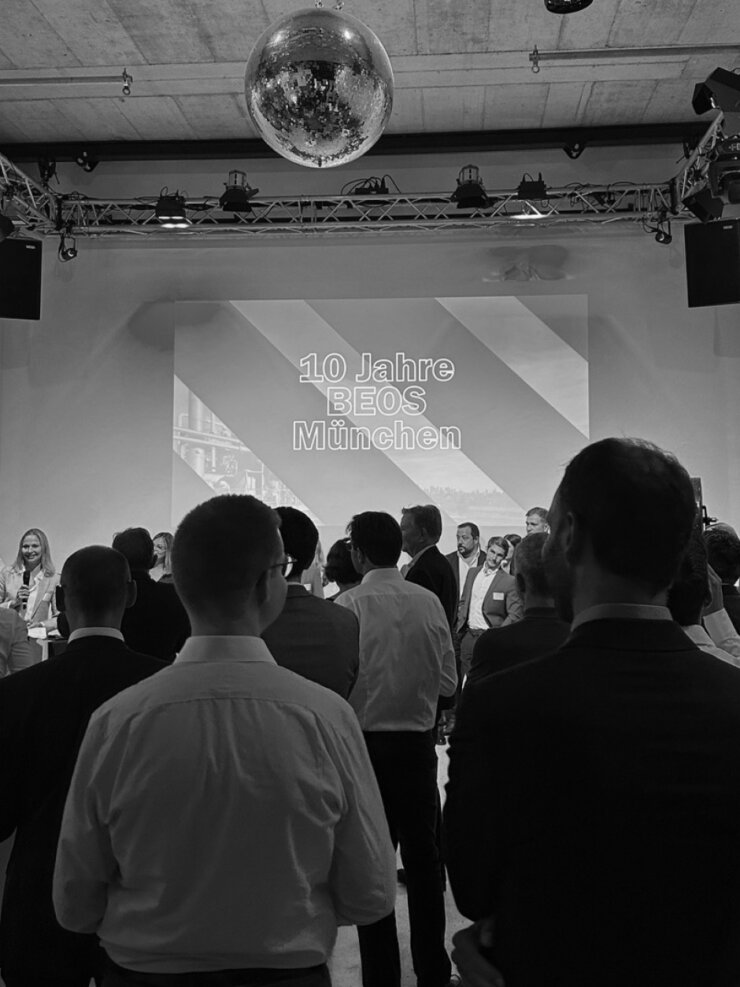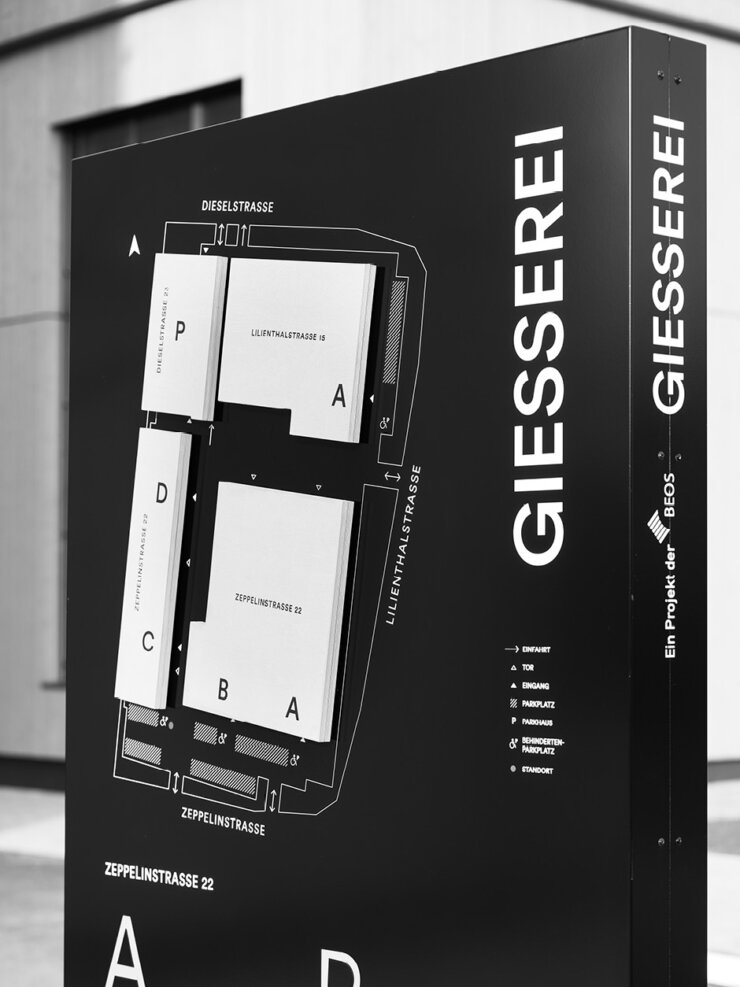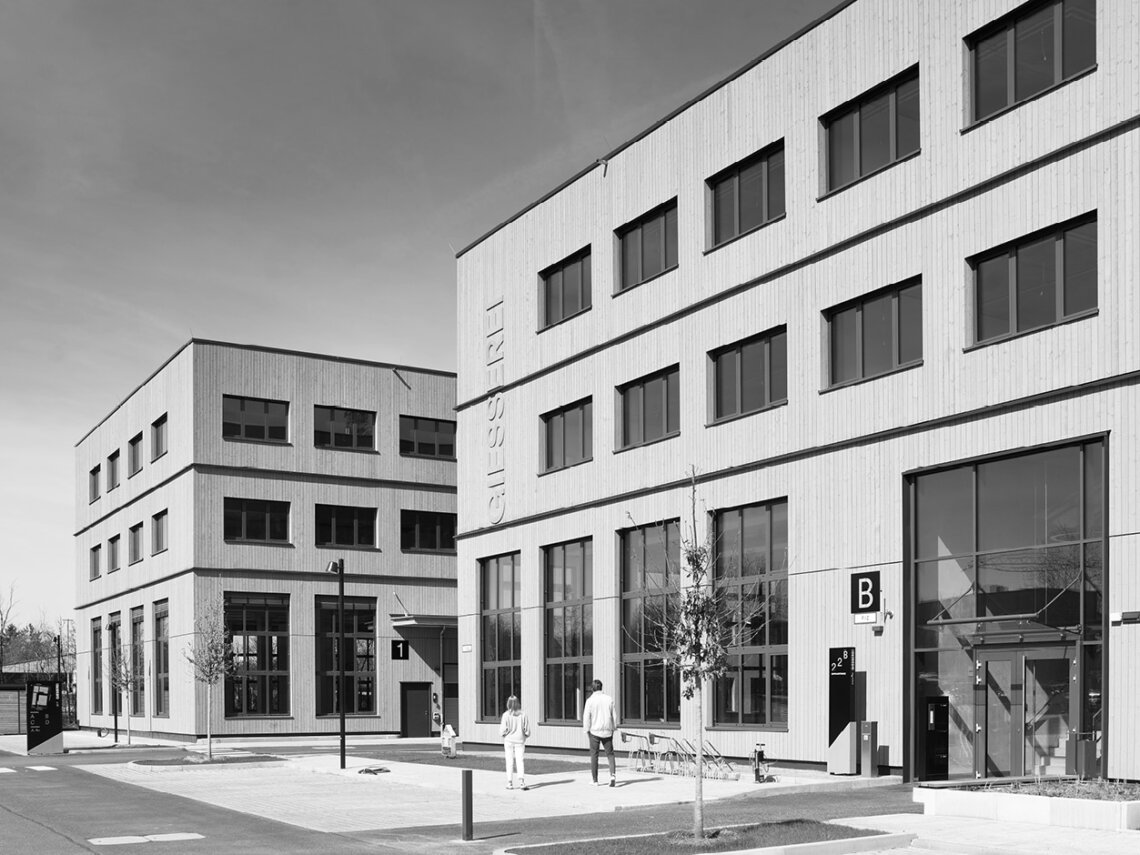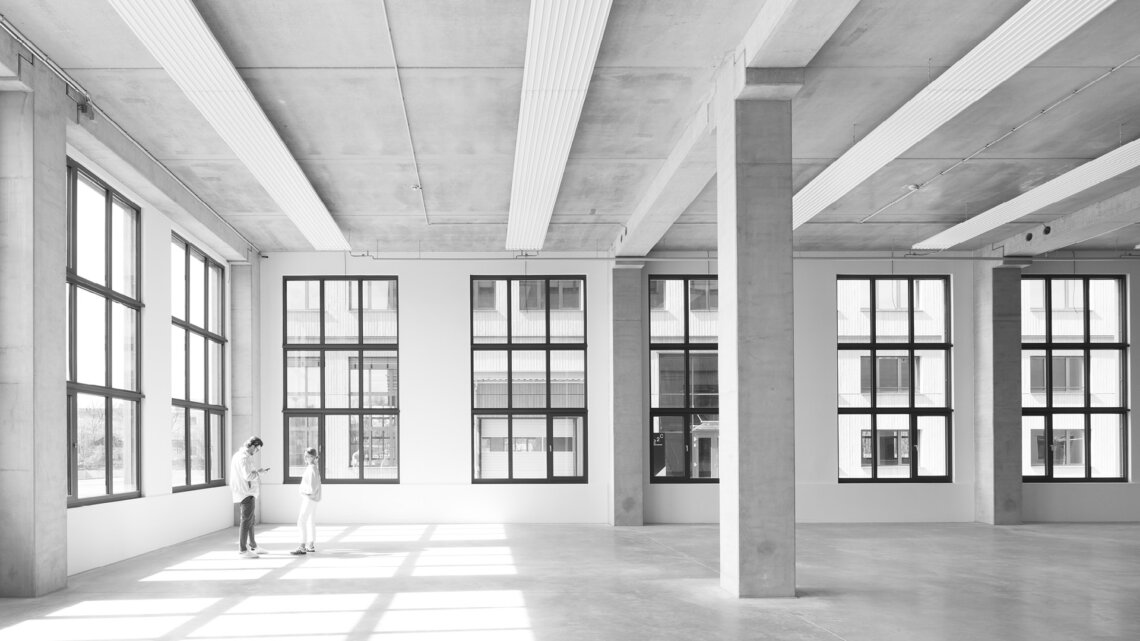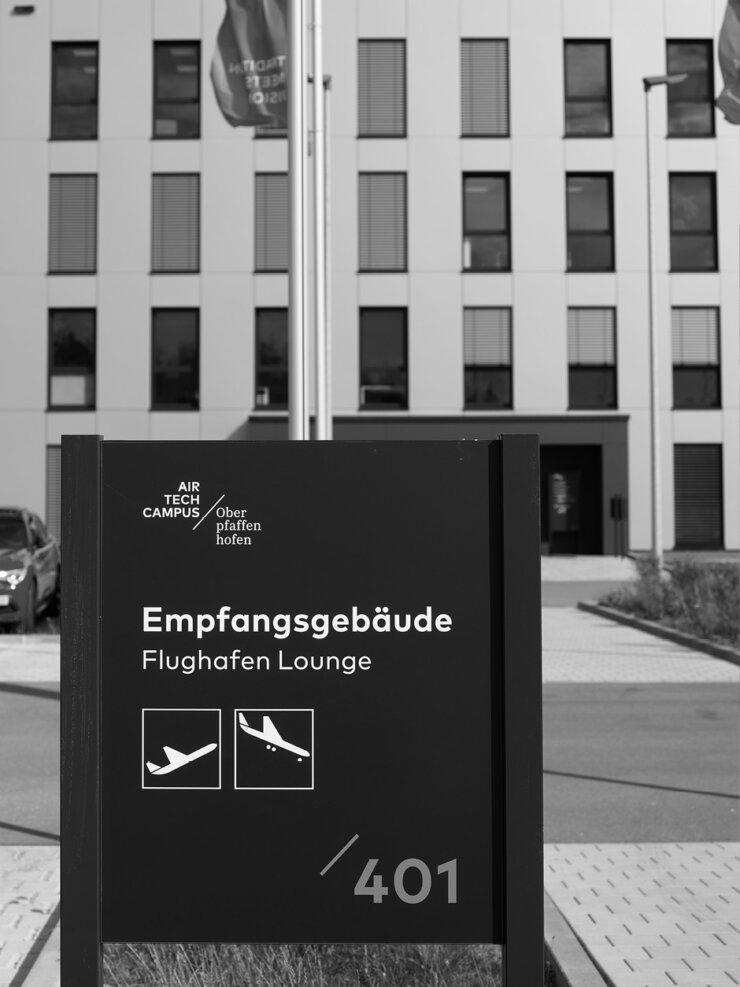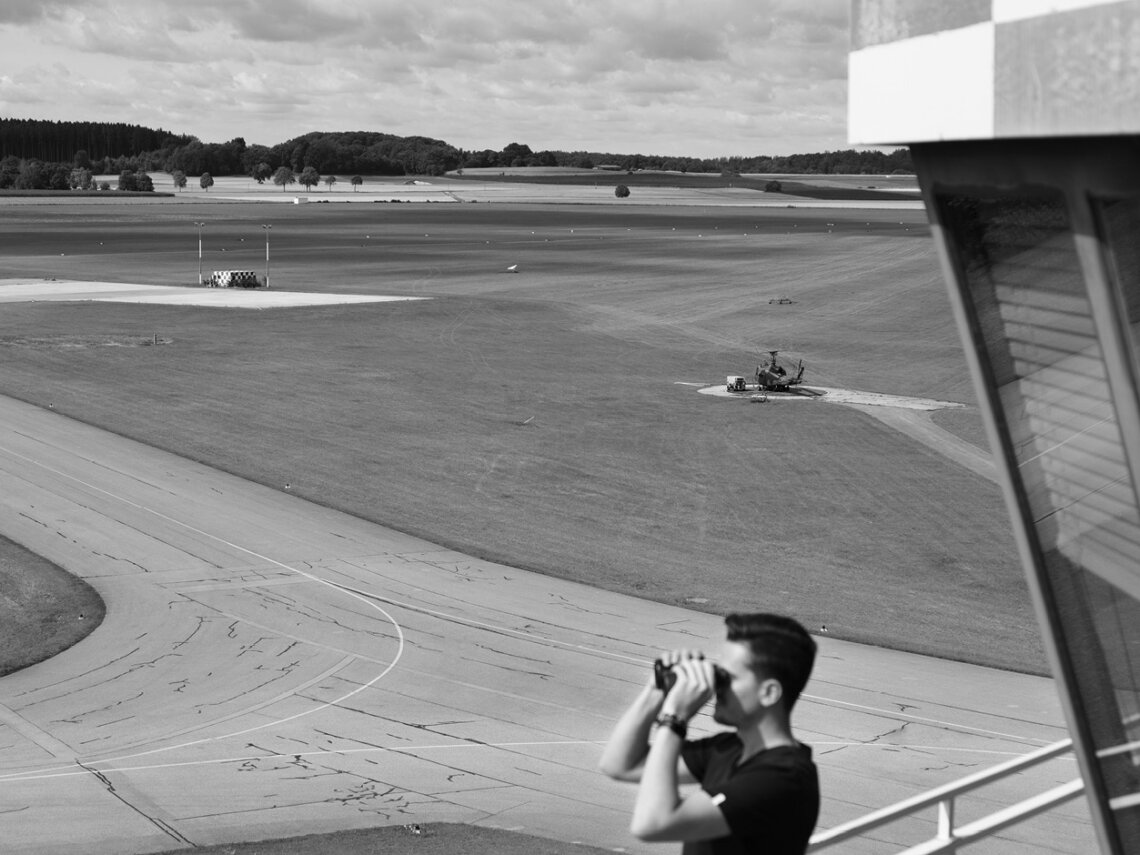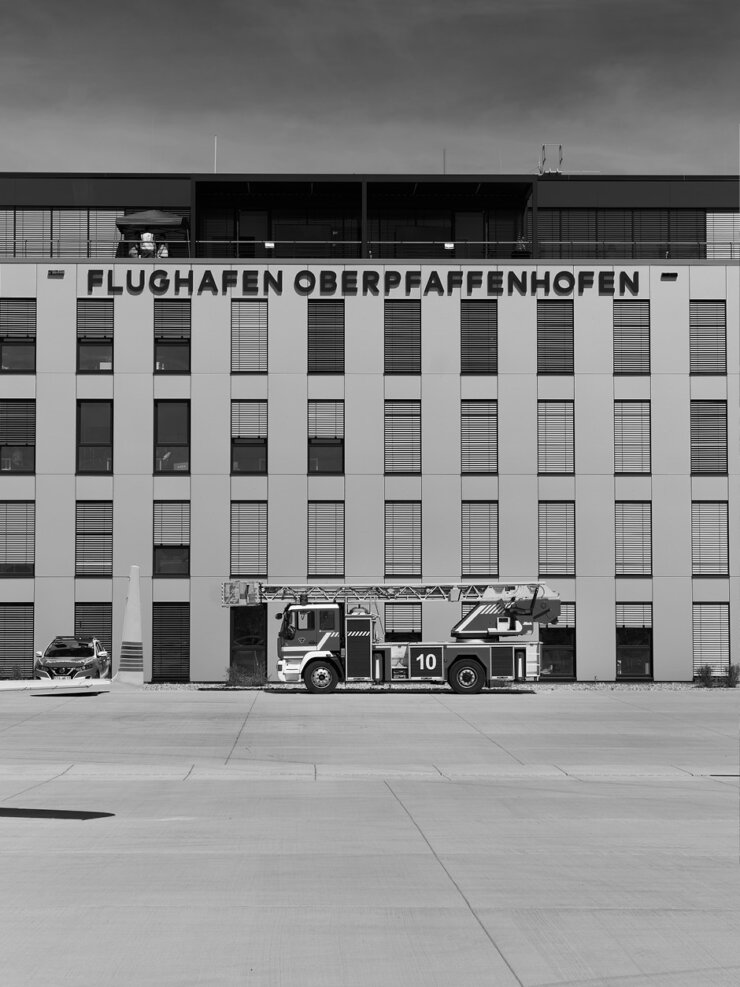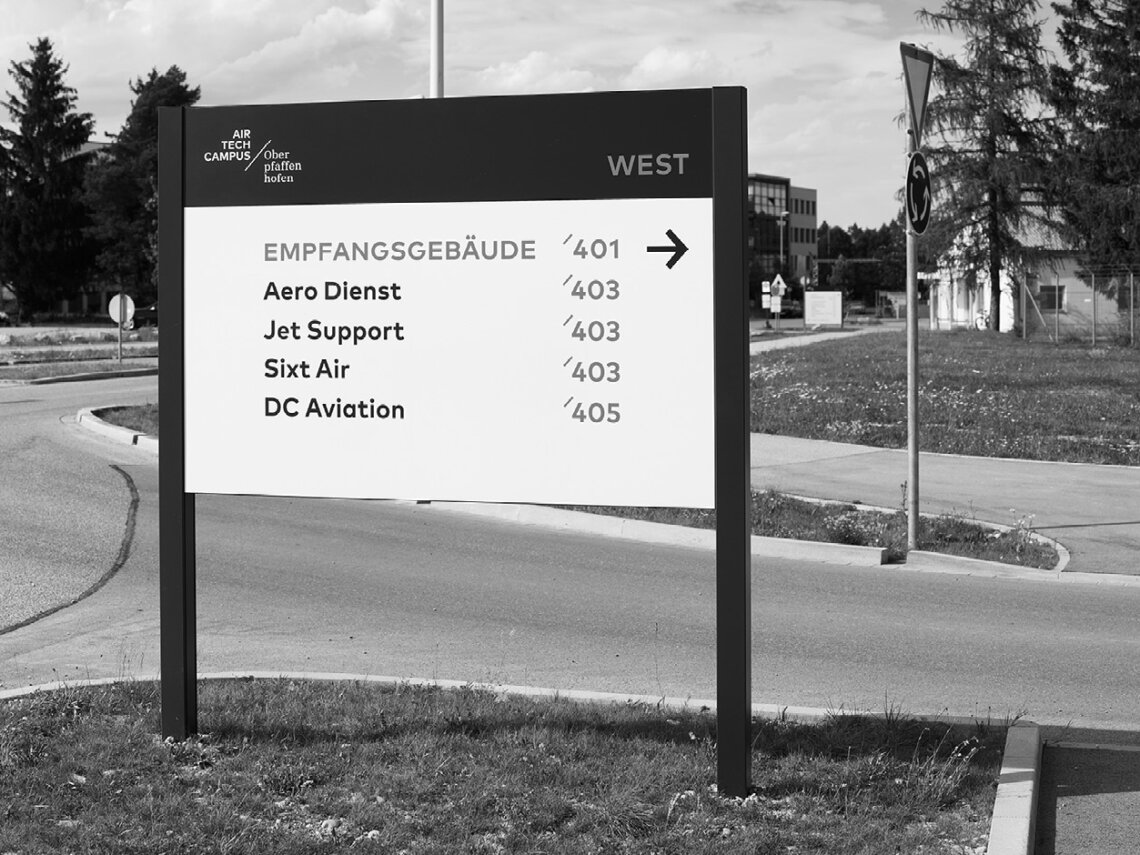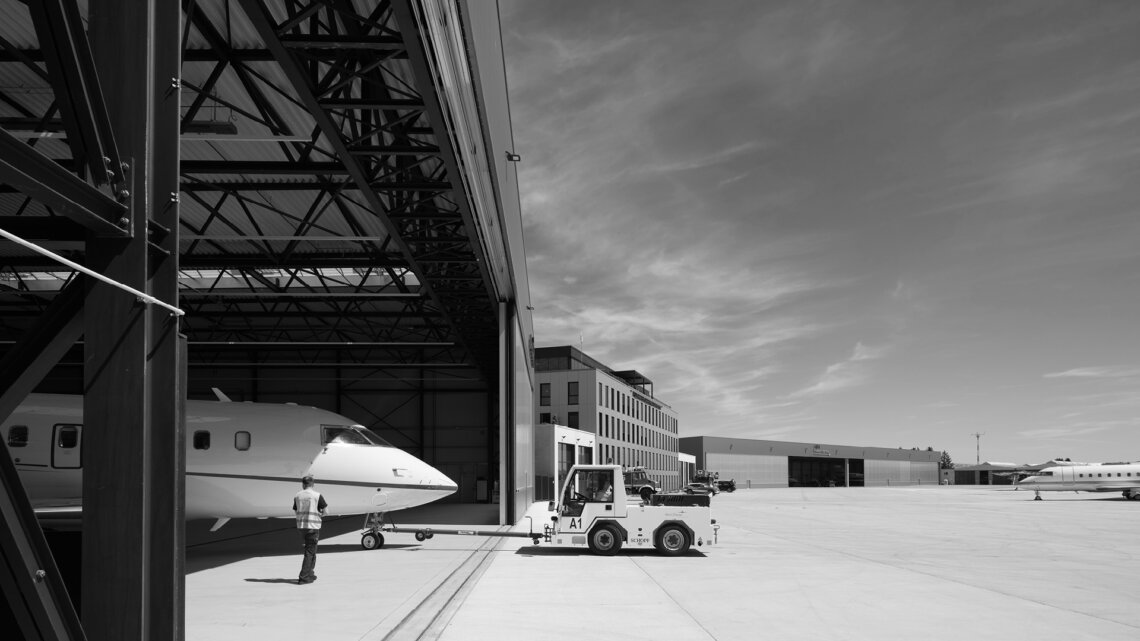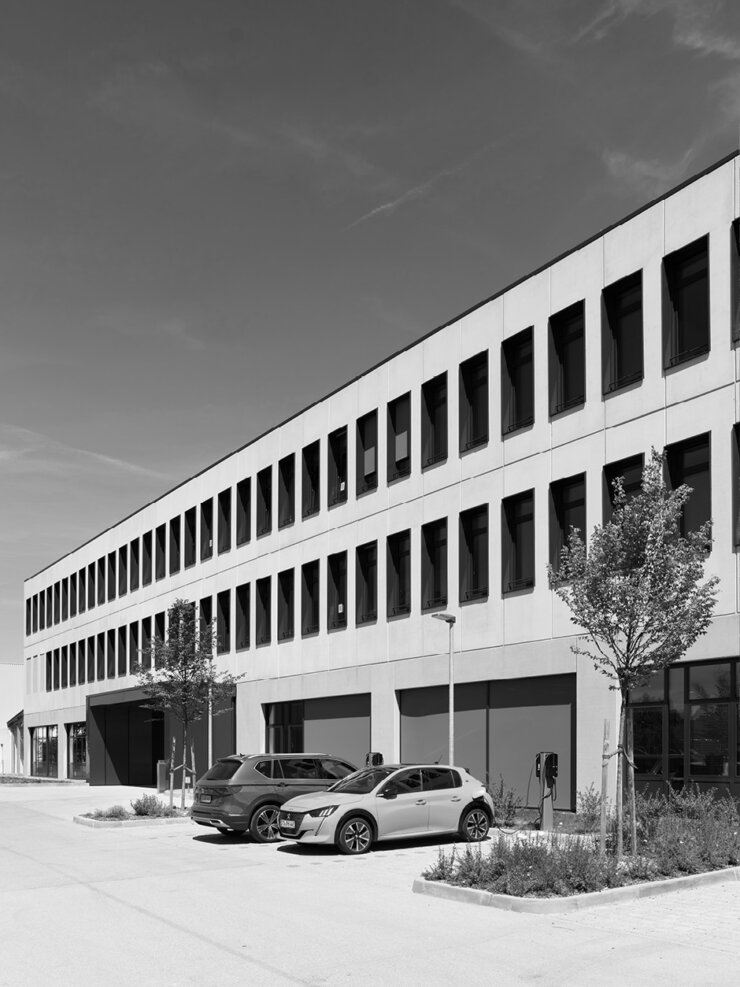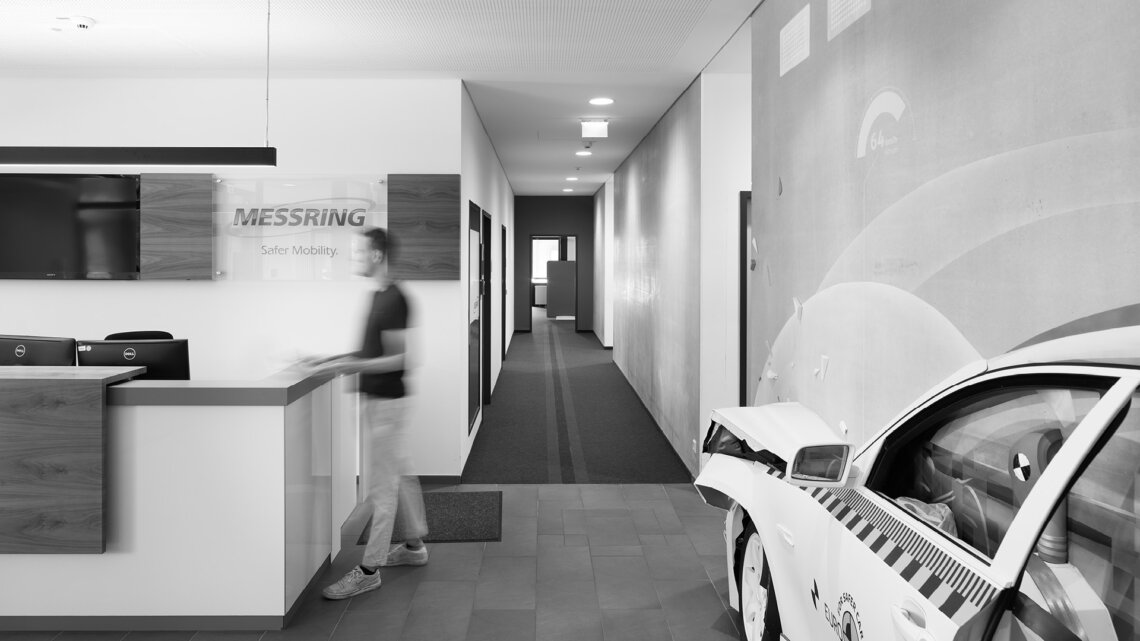Exemplary expansion. Targeting the districts. Ten years of BEOS in Munich.
In the end, it was the rhythmic pattering of the raindrops that gave the event a special acoustic note. The idea of celebrating the anniversary in a rooftop bar and chatting over a drink on the terrace was a really good one. But come rain or shine, nothing could put a dampener on the consistently good mood. After all, we had achieved a lot together. One of the biggest coups was the takeover of the “Air Tech Campus” in Oberpfaffenhofen, including the airport where the first vertical take-off was achieved in the late 1960s. Since then, a tech hub for aerospace technology has been growing and thriving in the “ATC”. The project has also seen Branch Manager Annemone Gull and her team reach a few new highs – for example, when they were awarded the 2024 real estate manager award in the “Management” category.
Interview with Annemone Gull
Was the Munich branch really an example of a vertical take-off?
I’d say it was more of a classic take-off with positioning, taxiing, take-off and climb. Current Board Spokesperson Hendrik Staiger created the basis for this by acquiring the first projects in Munich from Berlin. We reached a steady cruising altitude thanks to other projects in Bavaria, such as the “Druckwerk” in Oberschleissheim. Following the acquisition in 2016, we converted the former production site of a Munich publishing company into a modern multi-tenant business park with a total of five buildings. The fact that this converted property is now fully let is mainly thanks to the Munich team, which currently has 28 employees and is one of the largest BEOS locations, in addition to the quality of the property. This spirit was and still is the ideal approach for expanding in Bavaria.
But not every property benefits from such ideal conditions – what do you do then?
We thoroughly check whether the existing properties have any potential for transformation. This is a collaborative process that is based on exchanging ideas and opinions, and can sometimes even mean a real struggle to find the best solution. But once a decision is made, we are all on the same page This enables us to make optimal use of our available resources. An example of this is the “NOVA Neufahrn” industrial park. There we were dealing with the former headquarters of the cosmetics brand AVON. Prominently located at the entrance of the Neufahrn site and close to Munich Airport, this historic site definitely had a lot of potential. So we held discussions internally with each other, but also with architects and technicians; we weighed up different concepts and finally developed a modern industrial park with a mix of old and new buildings. Each building has its own style, but overall the site is very coherent with its industrial charm and the different users from a wide range of industries.
But in Garching it was different – why was everything demolished there?
That’s true: only the name “GIESSEREI” reminds us of the original purpose of the site. The demolition of the aluminium foundry was necessary as we had to thoroughly decontaminate the area of pollutants. This in turn gave us the opportunity to rethink the site, to give free rein to our ideas. In doing so, we have sought to keep our environmental footprint as small as possible. The result is a sustainable working and living space which used a lot of wood as a renewable raw material. The fact that we received a DGNB Gold Certificate for the thoroughly sustainable concept was pleasing recognition of our jointly developed project vision. Now that the first tenants have moved in, we can see how it has come alive. With its architecture and its extraordinary potential as a location, the “GIESSEREI” provides the ideal basis for working together with your neighbours and, ideally, giving rise to interdisciplinary synergies.
“The fact that we received a DGNB Gold Certificate for the thoroughly sustainable concept was pleasing recognition of our jointly developed project vision.”
How did you manage to get the “ATC” really flying?
First of all, we have found a valuable partner for the joint venture with TRIWO AG. The company not only operates several airfields and airports nationwide, but also has experience in setting up companies and developing them locally. By having this excellent “co-pilot” at our side, we benefitted from ideal conditions for taking the “Air Tech Campus” to a new level. This was a major challenge – after all, we are talking about more than 2.7 million square metres of space: enough space for almost three Oktoberfests taking place at the same time! In addition, a smart concept had to be developed for the existing portfolio – 57 buildings dating from between 1936 and 2023, with a total rental area of currently around 230 000 square metres. And this is not including the potential we have to tap into for new construction on the airport site and in the open spaces at the Gilching-Oberpfaffenhofen industrial park. When approaching such a project, you know you have a long flight ahead of you, and there is no autopilot to guide you. But the idea of creating a community of aviation-focused, high-tech and research pioneers inspired us – especially as Bavaria has been successfully positioning itself as an aerospace hotspot for many years now. Where, if not there, should ideas take to the skies?
“We have managed to awaken an airport from its slumber – so we are sure we will also find the right spot to create “our” urban district.”
Does it sound like the only thing missing now is an urban district like the “BERLIN DECKS” – just in the middle of Munich?
Correct, that’s right at the top of our wish list. With our many projects, we have demonstrated that we have the necessary competencies – be it in project development or revitalisation. Developing an inner-city district like the “Zeughof” in Berlin-Kreuzberg is definitely something we would be interested in. Urban life there is in no small part down to the lively neighbourhood culture in the trendy district. The “BERLIN DECKS” also spring to mind when we think of a commercial district that integrates the working world of today into an urban environment. Finding such a site in the middle of Munich is no easy task. We have put out a number of feelers, but the shortage of space in Munich’s real estate market does not make the search easy – especially in central locations. Nevertheless, we will continue to pursue our dream. We have managed to awaken an airport from its slumber – so we are sure we will also find the right spot to create “our” urban district.

